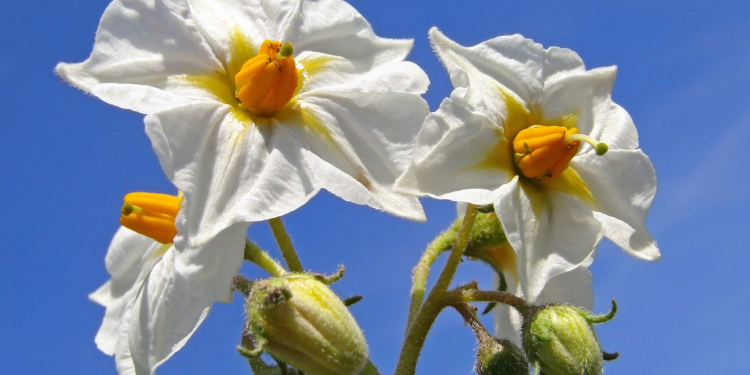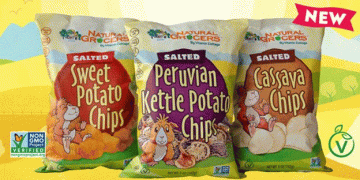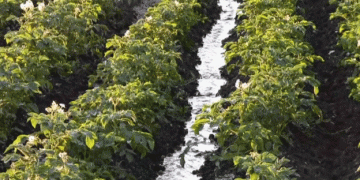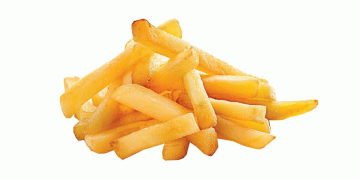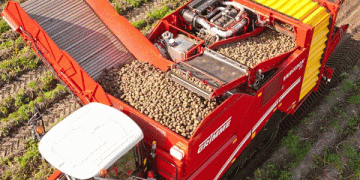Researchers from breeding company Solynta and Wageningen University & Research have identified, cloned and characterized the key gene for self-fertilization in diploid potatoes. This discovery makes it possible to fertilize potato plants with their own pollen.

Now SLI gene ( S-locus inhibitor) has been identified, breeders can using hybrid breeding techniques, breeding faster and more precisely than is possible with traditional breeding. As a result, new resilient and nutritious varieties can be brought onto the market quickly, which contribute to more sustainable potato cultivation. The result of the molecular analysis of Sli has been published in the scientific journal Nature Communications .
Genome potato complex
The potato is the world’s most produced food crop after wheat and rice. The crop is also becoming increasingly important in developing countries because of its nutritional value. But contrary to its mundaneness, the cultivated potatoes now grown have a surprisingly complex genome. This makes potatoes very difficult to improve with traditional breeding techniques. Between the first crossing of two potato plants; and marketing the final commercial variety can easily take 10 to 15 years. Therefore, only modest progress has been made in the field of genetic cross-breeding over the past century. Characteristics that contribute to better disease resistance, adaptation to the changing climate and higher yields.
Hybrid breeding
Hybrid breeding can change this. The technique, which is separate from genetic modification, has already contributed to the rapid improvement of crops; such as maize, tomato, sorghum, cabbage and sugar beet. And could also help to quickly develop new potato varieties; that are adapted to local conditions such as drought or heavy rainfall. Another big advantage is the fact that hybrid potato varieties grow from seed instead of the traditional seed potatoes. The seed is also disease-free and requires less chemical protection after sowing. Seed can also be more easily stored and transported to potato growers, because it takes up much less space than seed potatoes.

Potato breeding
Breeding hybrid potatoes is based on crossing diploid potatoes. Each cell contains two full sets of chromosomes (one from each parent) instead of our cultivated potato. The complex genome of which consists of four sets of chromosomes (tetraploid). Unlike crossed tetraploid potatoes, all offspring of crossed diploid potatoes in hybrid breeding have exactly the same characteristics as their parents. This enables faster and more targeted breeding.
“In order to fully utilize the possibilities of hybrid potato breeding , we first had to identify, clone and characterize the key gene for self -compatibility in the potato, Sli (S-locus inhibitor),,” explains Professor of Plant Breeding Richard Visser of Wageningen University & Research. (WUR). “An important element of hybrid breeding is the fixing of desirable characteristics of the two parental lines by means of inbreeding. Over the course of evolution, many plants, including virtually all diploid potato species, have prevented inbreeding by preventing themselves from fertilizing themselves, i.e. becoming self-incompatible.
Key gene sli gene
This can now be overcome with the Sli gene. The possibility of self-compatibility in diploid potatoes as such and also its location on chromosome 12 had been known for some time, but as yet the gene encoding this trait was unknown and had not yet been isolated and characterized. Thanks to genetic analysis and genome sequencing, this has now been achieved. The Sli gene thus holds the key to fast and effective breeding of new diploid potatoes.”
Ernst-Jan Eggers, geneticist at Solynta, explains: ‘Our company was already using the Sli gene by crossing self-incompatible diploid lines with a Sli gene donor. Hopefully these new insights will also help to discover new variants of the Sli gene that help to select for improved taste, efficient water use, disease resistance and other characteristics that are important in our constantly changing world. With this knowledge, we also learn more about self-incompatibility systems. That is important from a fundamental scientific perspective and it can also provide a significant boost for the breeding of other crops from the same family as the potato, such as tomatoes, aubergines and peppers.’
Nature communications
The research of Solynta and WUR is described in the scientific journal Nature Communications . Solynta and WUR have been working together for some time. Now that they have jointly solved the problem of self-incompatibility, they will focus on other issues on the way to potatoes that require less pesticides and are more resistant to the effects of climate change.
